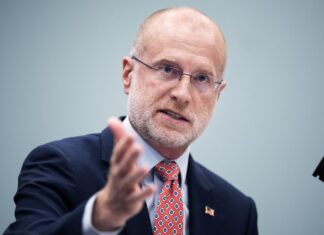In a bold move blending historical redemption with 21st-century energy strategy, the Trump administration announced a $1 billion loan Tuesday to bring Three Mile Island back online—reviving one of the most infamous names in U.S. nuclear history to help power the nation’s future.
The Department of Energy’s cash infusion will go to Constellation Energy, a Baltimore-based utility, to restart Reactor Unit One, the still-functional twin of the reactor that partially melted down in 1979. That incident—the worst nuclear accident in U.S. history—triggered sweeping reforms in nuclear oversight and cast a long shadow over public trust in atomic energy. Now, over four decades later, the site is being rebranded as the Crane Clean Energy Center, and slated to produce 800 megawatts of reliable, carbon-free power—enough to serve nearly 800,000 homes.
The investment signals a sharp shift in America’s energy posture, particularly under the second Trump administration, which has emphasized energy affordability, grid reliability, and national competitiveness in the AI age.
“We want to bring as much net addition of dispatchable, reliable electricity onto the grid to stop these price rises in electricity,” said Energy Secretary Chris Wright, adding that a stable grid is also vital to keeping pace in the global AI race and reshoring U.S. manufacturing.
While Reactor Unit Two—the one that failed in 1979—will remain permanently shut, Unit One ran safely for decades before being closed in 2019 for economic reasons. Constellation now sees the dormant reactor as a crown jewel of its future-facing strategy, especially with growing power demands from AI data centers. A recently announced deal with Microsoft underscores the strategic vision: pairing clean nuclear energy with the exponential energy appetite of cloud computing and artificial intelligence.
“The 800MW potential of the site is crucial,” said DOE Loan Programs Office Director Greg Beard, pointing to the importance of Three Mile Island to PJM, the Mid-Atlantic regional grid operator. Beard expects the restarted reactor to be fully operational as early as 2027.
The project’s momentum has been building quietly. In July, the Nuclear Regulatory Commission (NRC) held a public hearing at Penn State–Harrisburg to solicit feedback on the plan. The facility’s rebranding from an emblem of crisis to a symbol of clean energy—named after former Constellation CEO Christopher Crane—was part of a broader public messaging effort to reshape perception and political support.
Surprisingly—or perhaps tellingly—the push has bipartisan backing. Pennsylvania Governor Josh Shapiro, a Democrat, has framed nuclear energy as a core part of the state’s green economy, praising the sector’s ability to reduce emissions while supporting union jobs and energy security.
The announcement also marks a sharp contrast with the previous administration’s posture toward nuclear. Secretary Wright took aim at policies under President Biden, which he said encouraged the closure of multiple nuclear plants and up to 100 gigawatts of affordable generation capacity through regulation and economic pressure.
“This is exactly what America needs,” Wright said, emphasizing the Trump administration’s “all-of-the-above” approach—supporting nuclear, coal, gas, and critical minerals as part of a diversified national energy strategy.
And more is likely on the way. Beard confirmed that the DOE’s loan office is seeing a surge in applications across energy sectors, actively reviewing projects that could reinvigorate the domestic energy supply chain.








